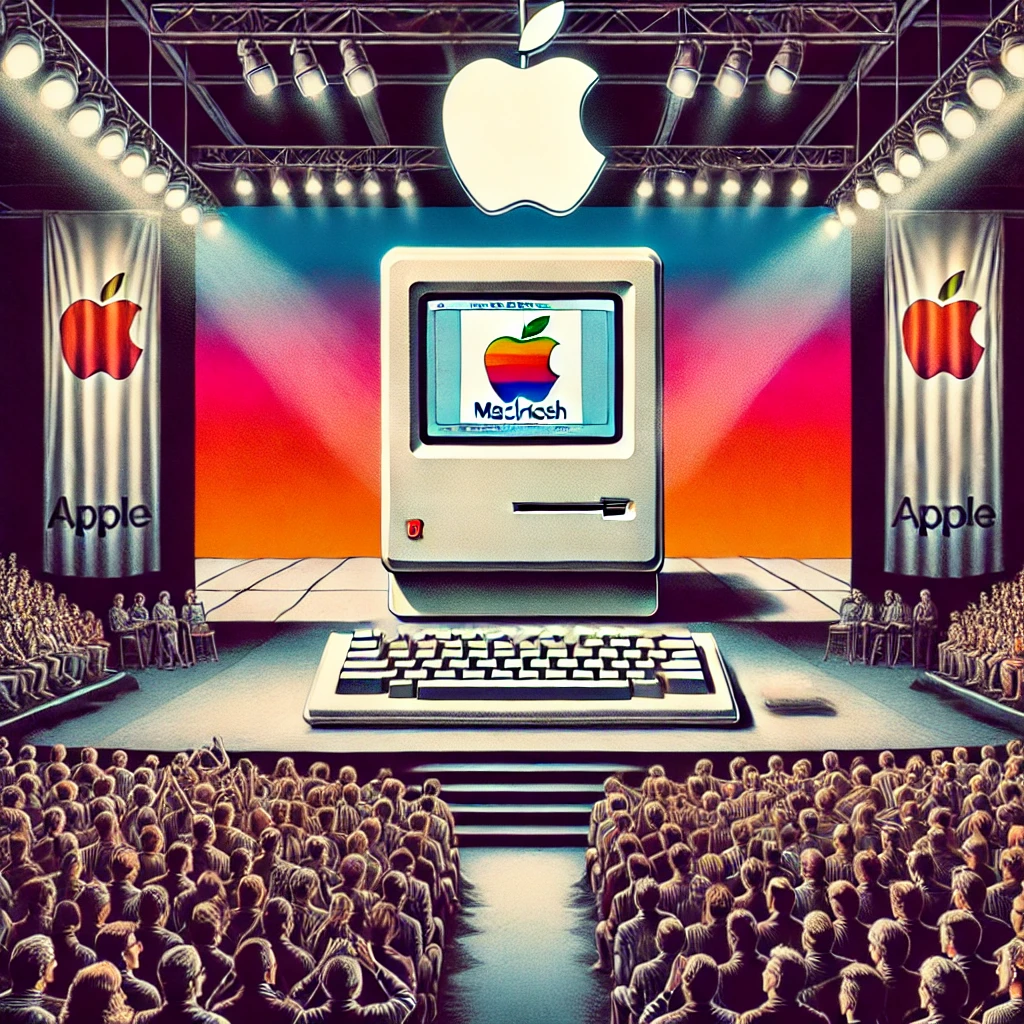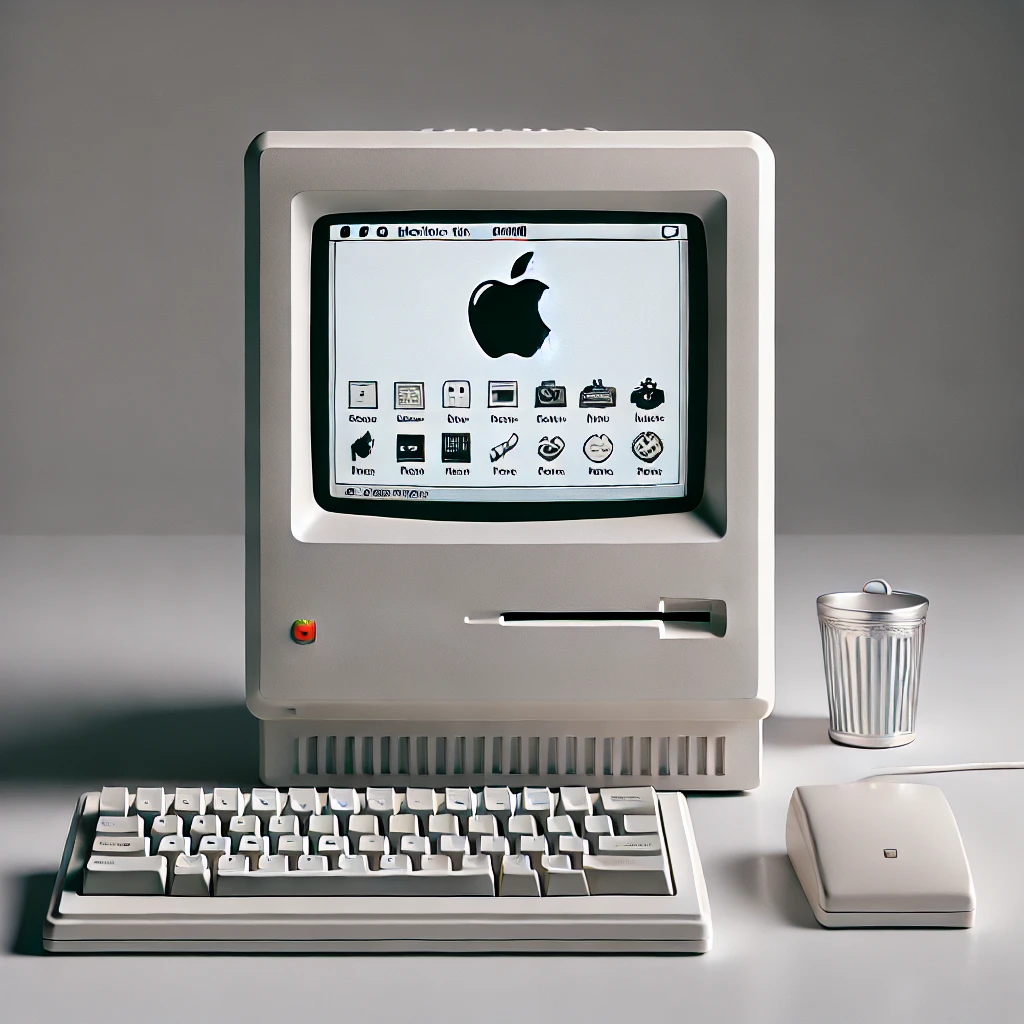Apple’s announcement of the Macintosh was as revolutionary as the product itself. The launch was heralded by an iconic Super Bowl commercial directed by Ridley Scott, which aired just two days prior to the official debut. The ad, inspired by George Orwell’s 1984, depicted the Macintosh as a force of liberation against conformity and technological oppression. This bold marketing approach not only captured public attention but also cemented the Macintosh as a symbol of innovation and rebellion.

At its debut, Apple co-founder Steve Jobs delivered a theatrical presentation, revealing the Macintosh to an audience of tech enthusiasts and media. The computer, which spoke its first words during the demonstration, became an instant sensation. The combination of cutting-edge technology and brilliant marketing ensured the Macintosh’s place in history as more than just another computer.
The Marketing Genius Behind Macintosh
Apple’s marketing strategy for the Macintosh was unparalleled. The dramatic Super Bowl commercial and Steve Jobs’s charismatic presentation combined to make the launch a cultural phenomenon. These efforts not only highlighted the Macintosh’s capabilities but also resonated deeply with an audience seeking innovation and individuality.
Innovations That Changed the Game

The Macintosh’s most notable feature was its GUI, which allowed users to interact with the computer through graphical icons and a mouse rather than text-based commands. This innovation made computers far more user-friendly and accessible to non-technical users, laying the foundation for modern computing interfaces.
While the Macintosh was not the first computer to feature a GUI—pioneered by Xerox PARC’s Alto—Apple’s implementation brought the concept to the mass market. Coupled with software like MacPaint and MacWrite, the Macintosh became a powerful tool for creativity and productivity. It inspired other tech companies to adopt similar interfaces, directly influencing the design of Microsoft Windows and other operating systems.
Lasting Impact on Technology and Culture

The introduction of the Macintosh ushered in a new era of personal computing, shaping how people interact with technology to this day. It redefined the possibilities of desktop publishing, graphic design, and multimedia creation, industries where Apple products remain dominant. The Macintosh also helped establish Apple’s reputation as a leader in innovation and user experience, paving the way for later breakthroughs like the iPod, iPhone, and iPad.
Beyond its technological advancements, the Macintosh launch demonstrated the power of branding and storytelling in technology. Apple’s ability to connect emotionally with its audience set a precedent for how tech products are marketed and perceived. The Macintosh’s legacy is evident in the user-centric design philosophy that now permeates the industry.
